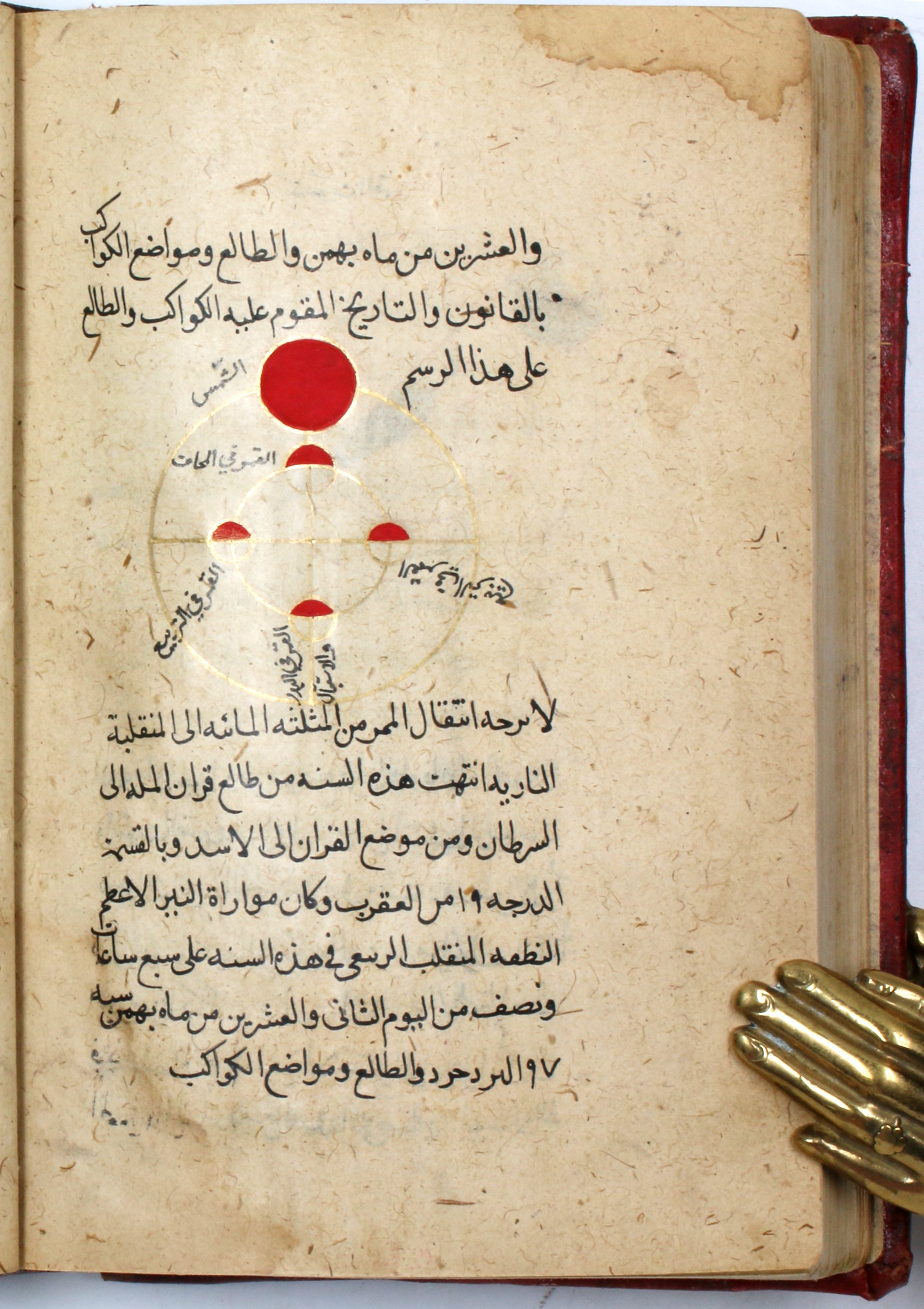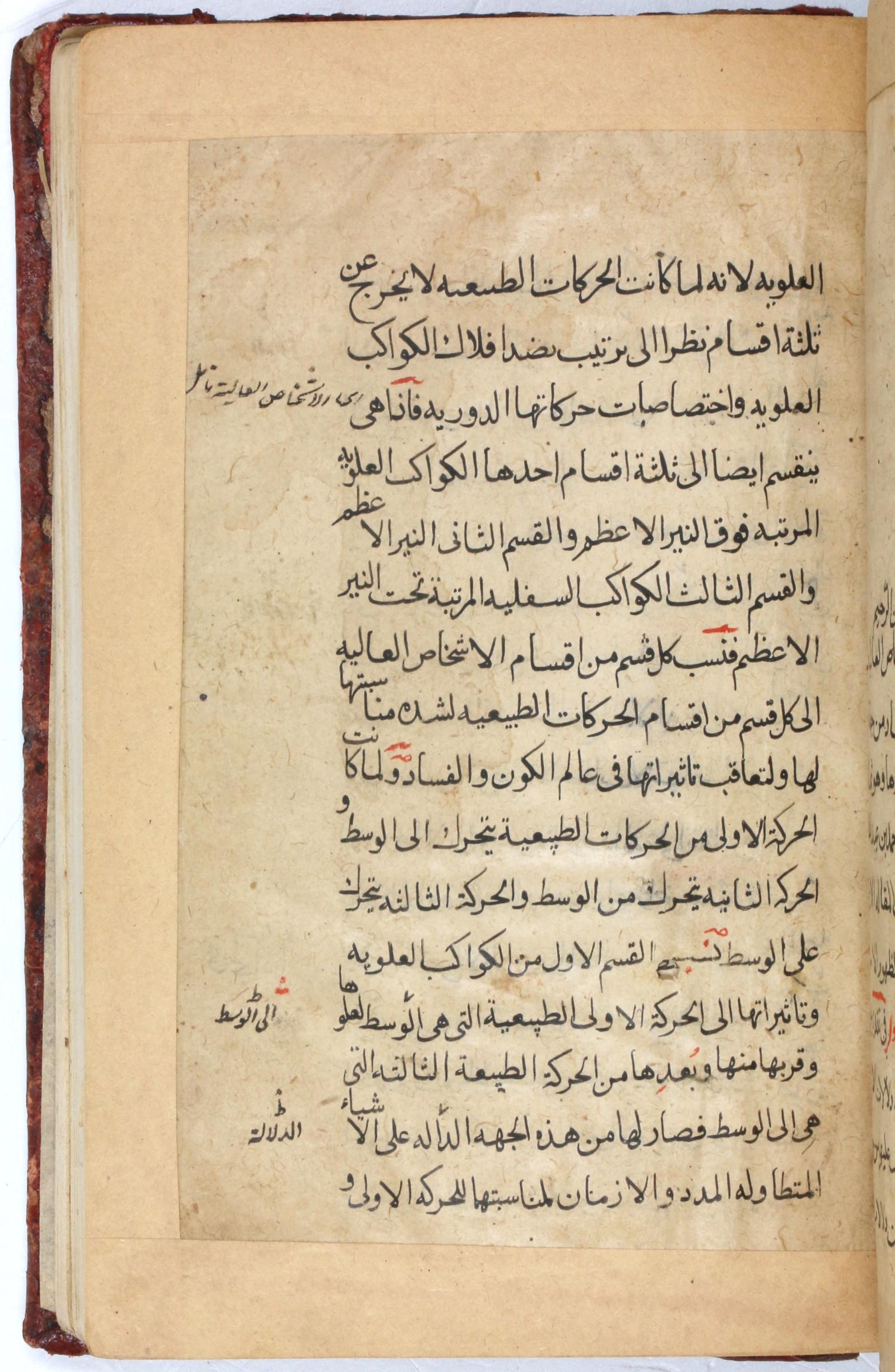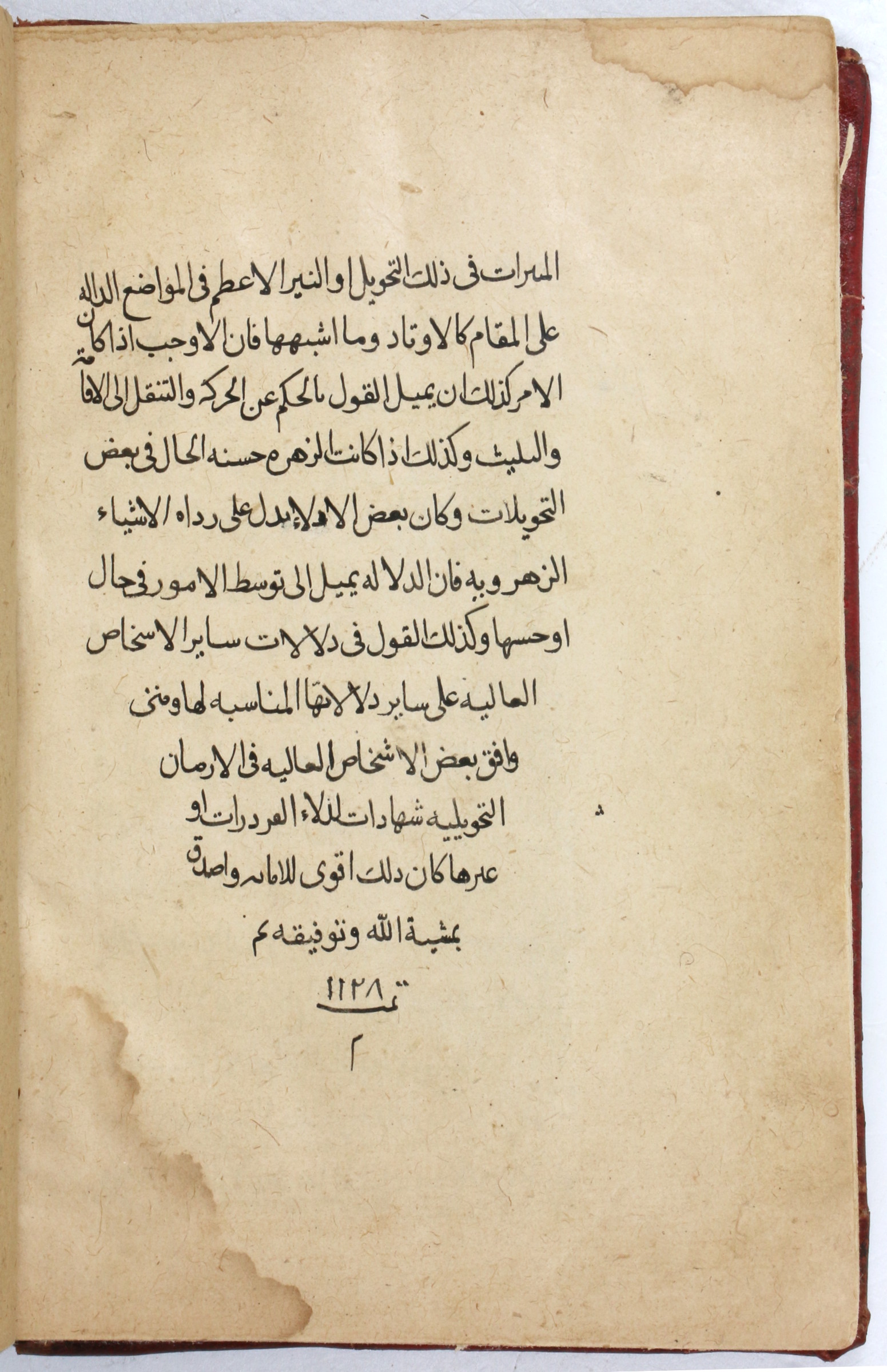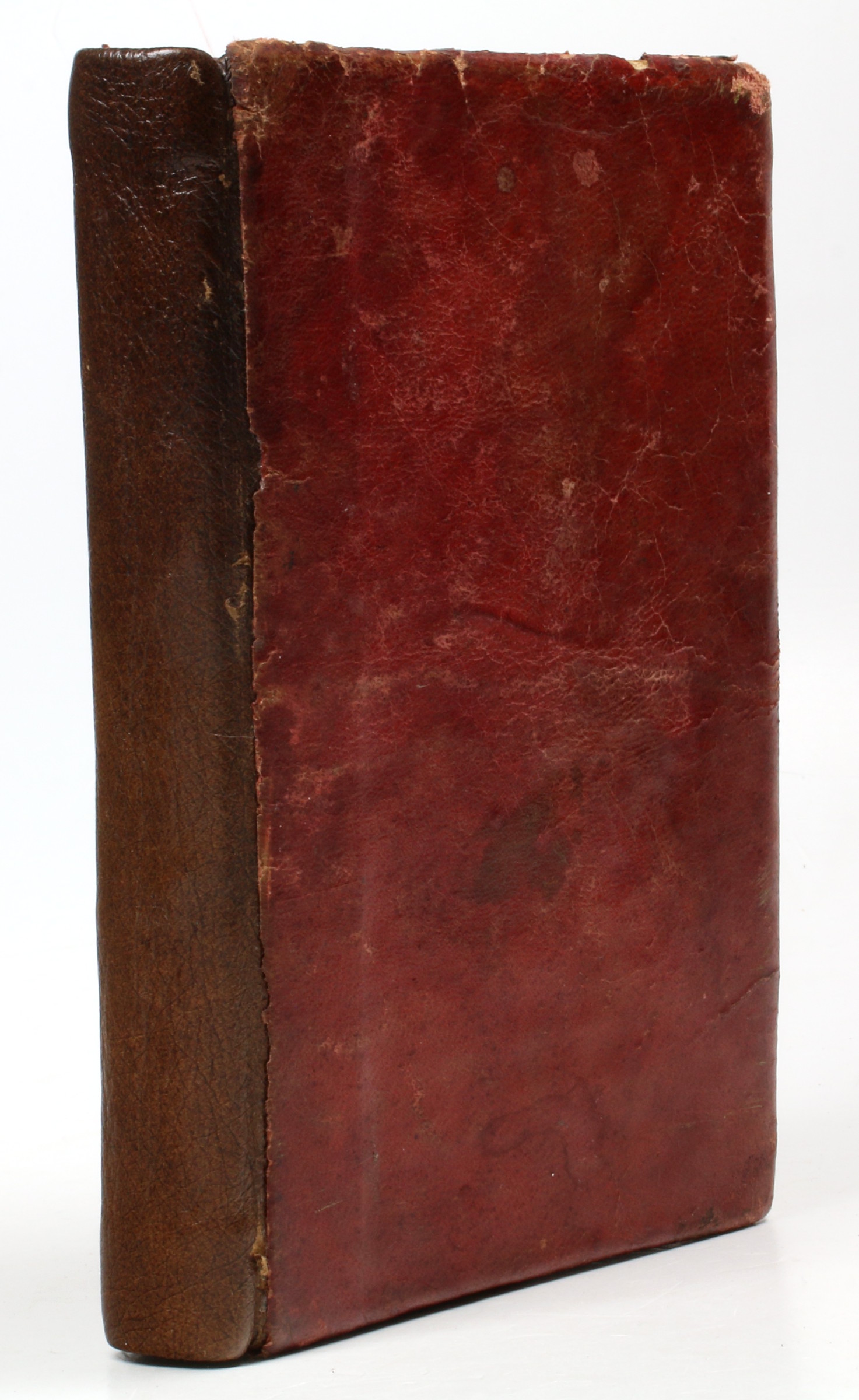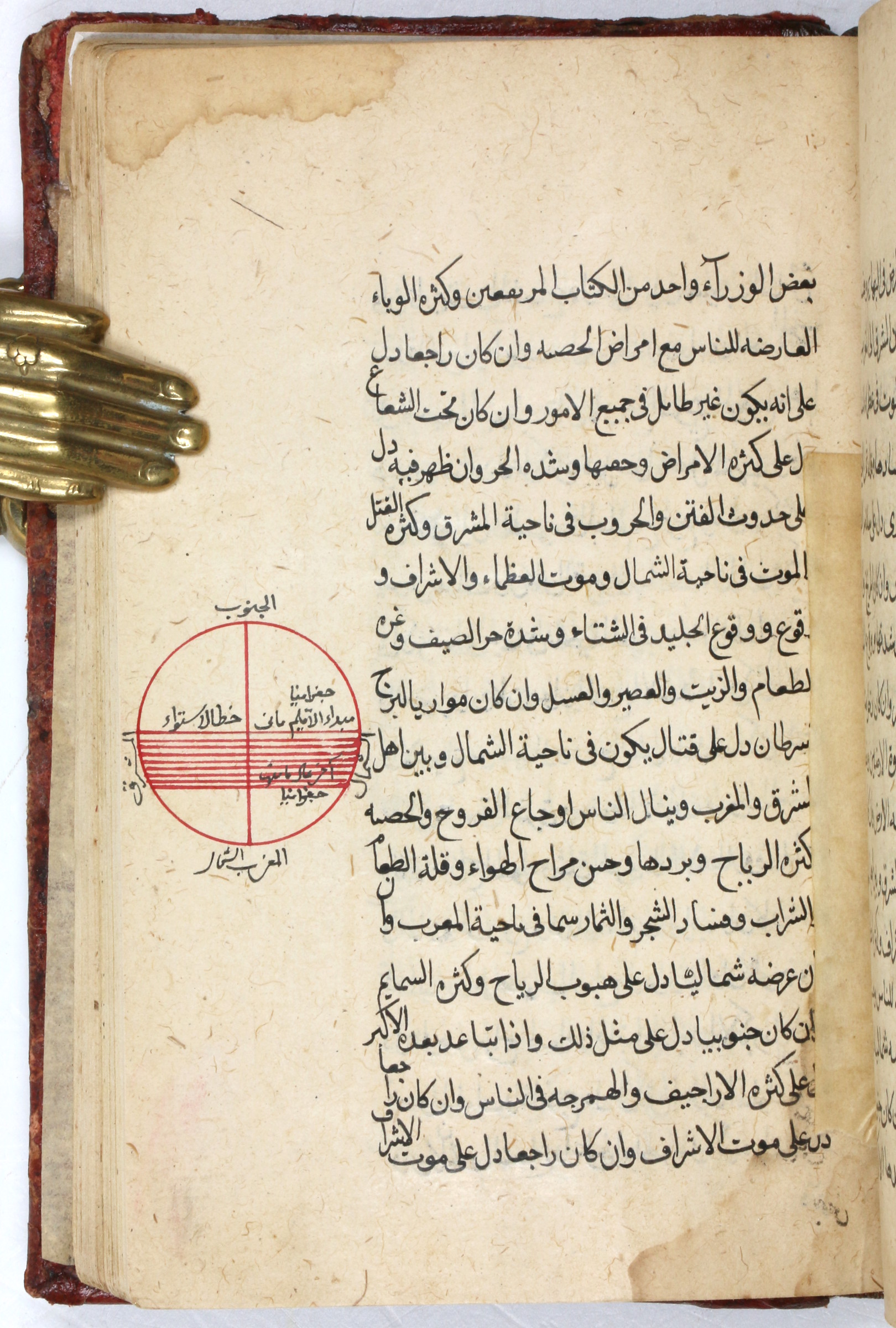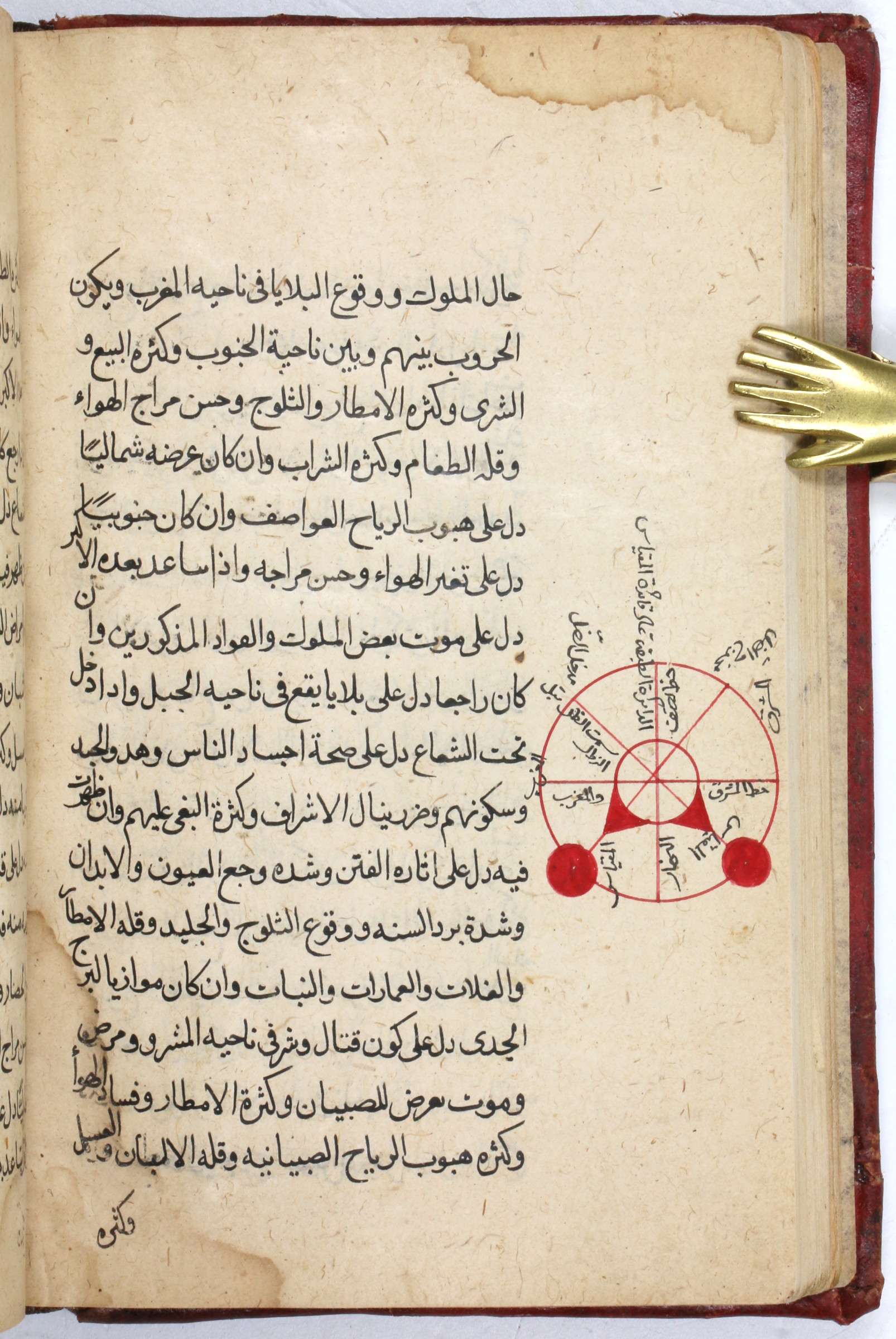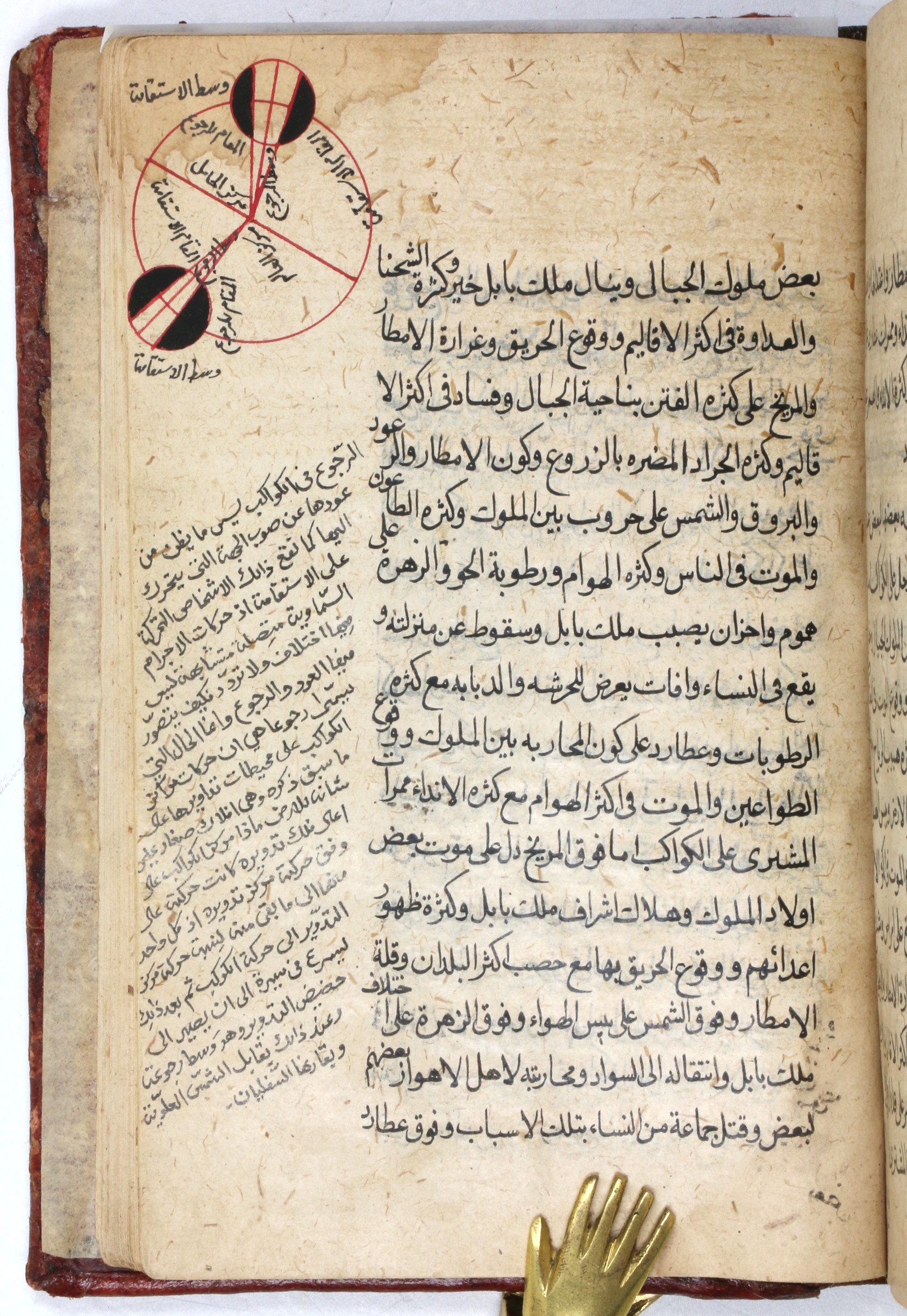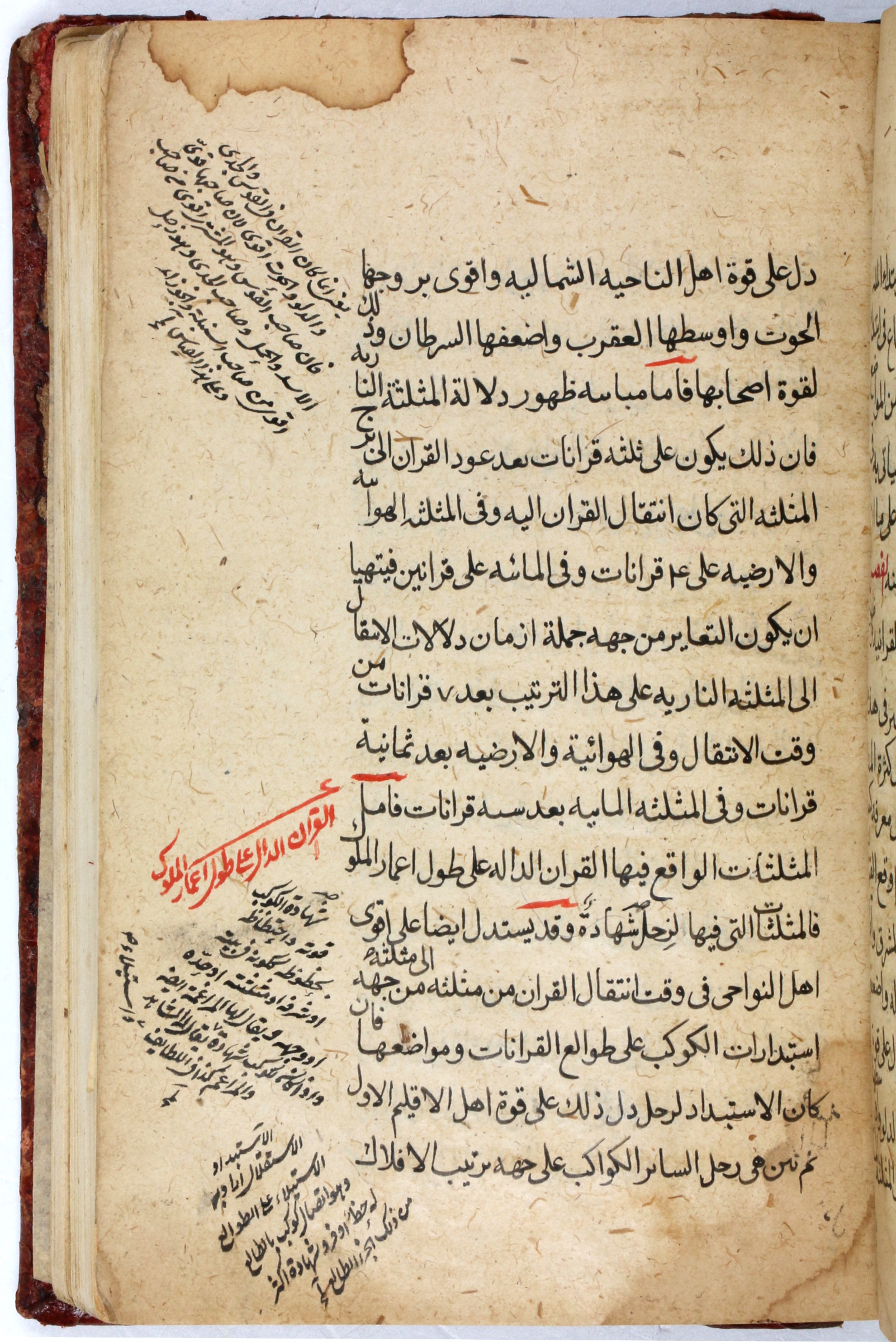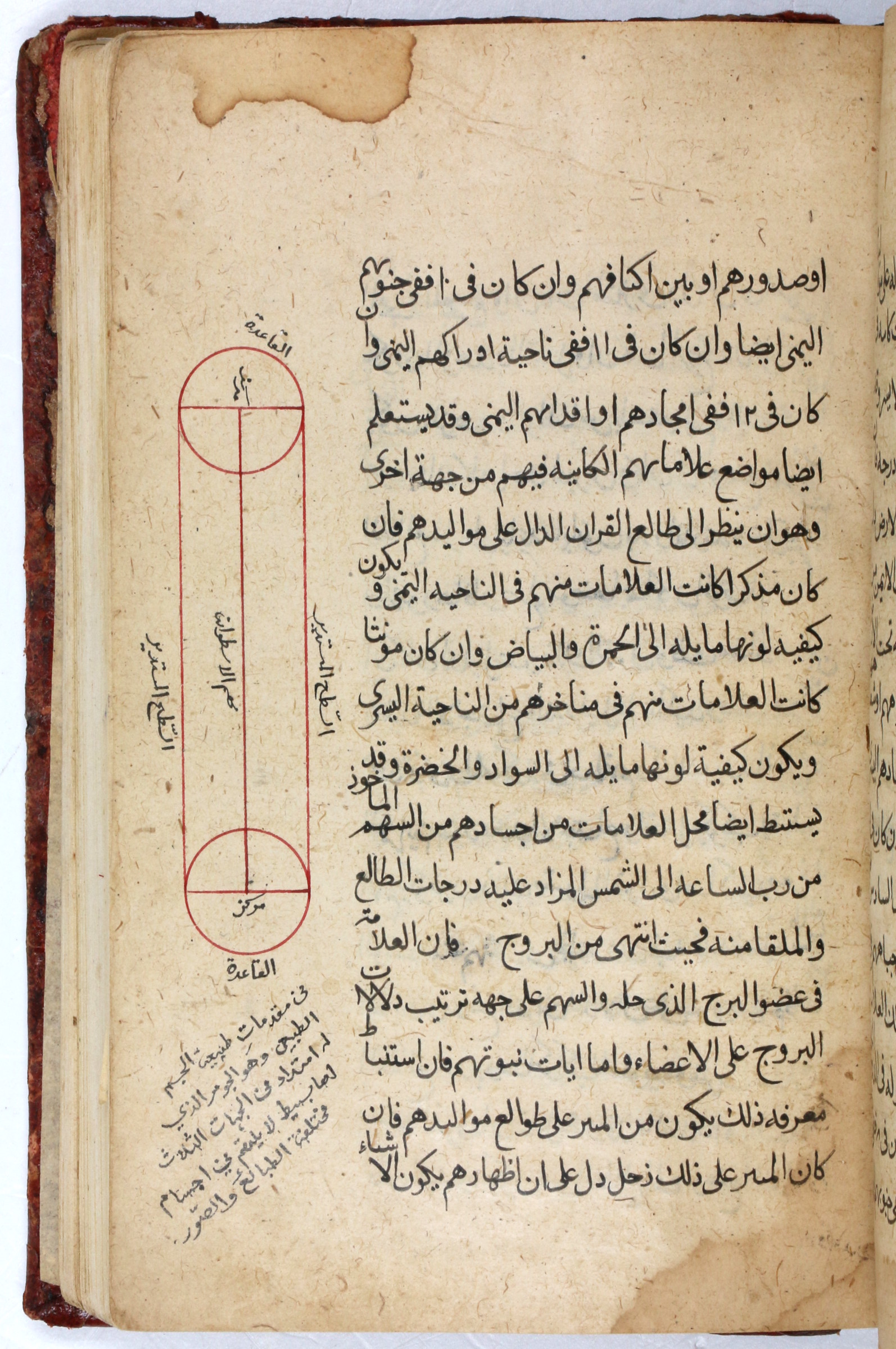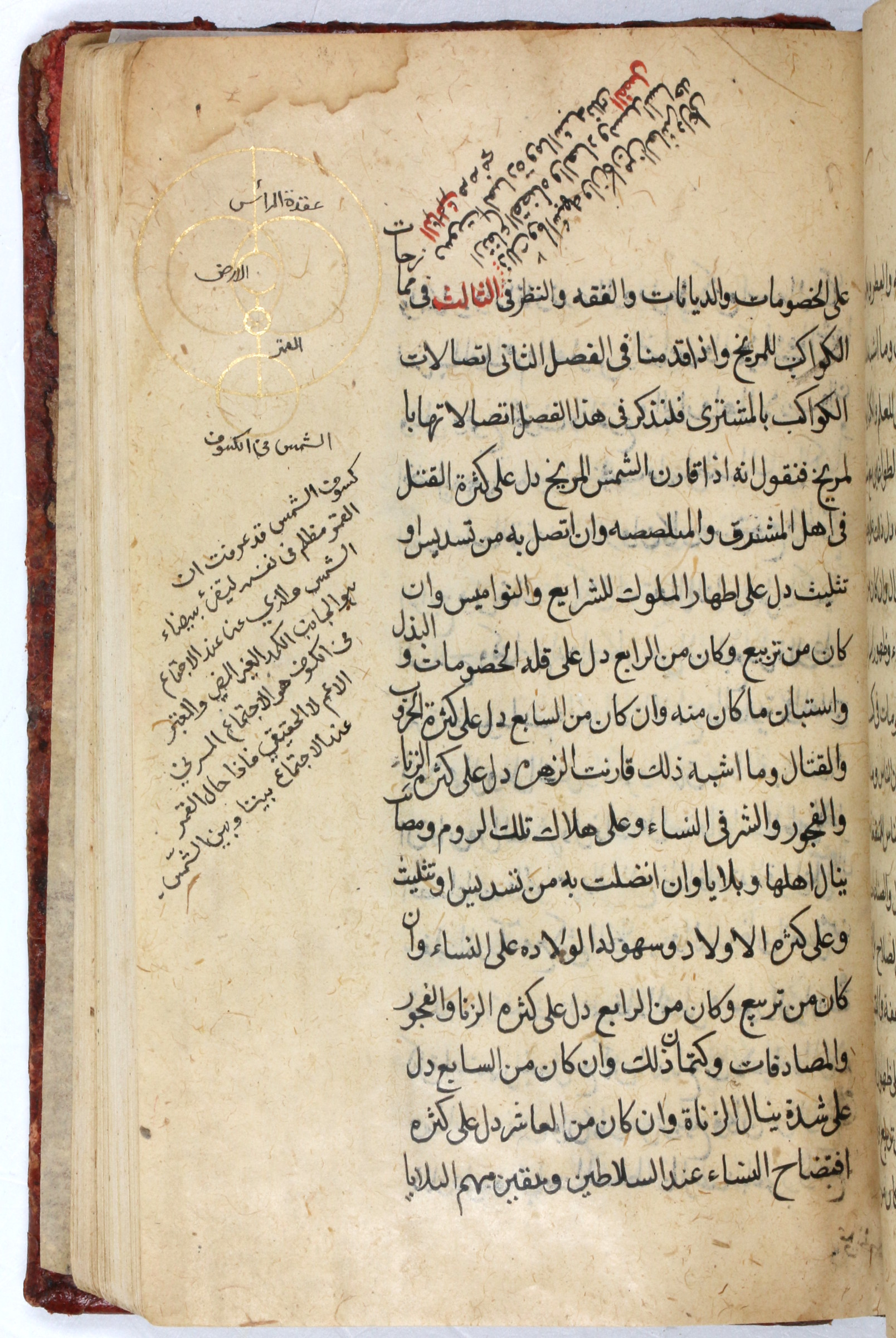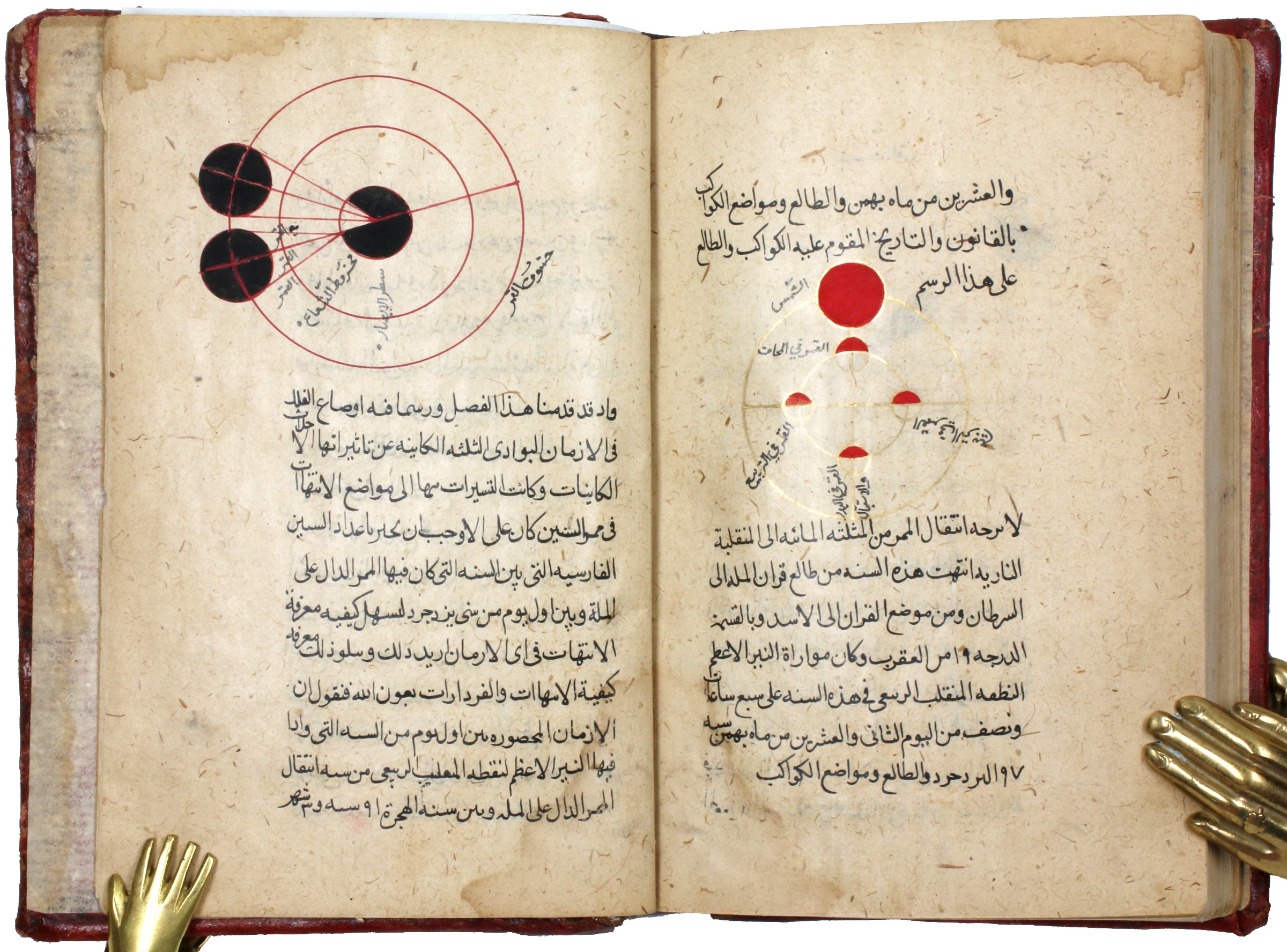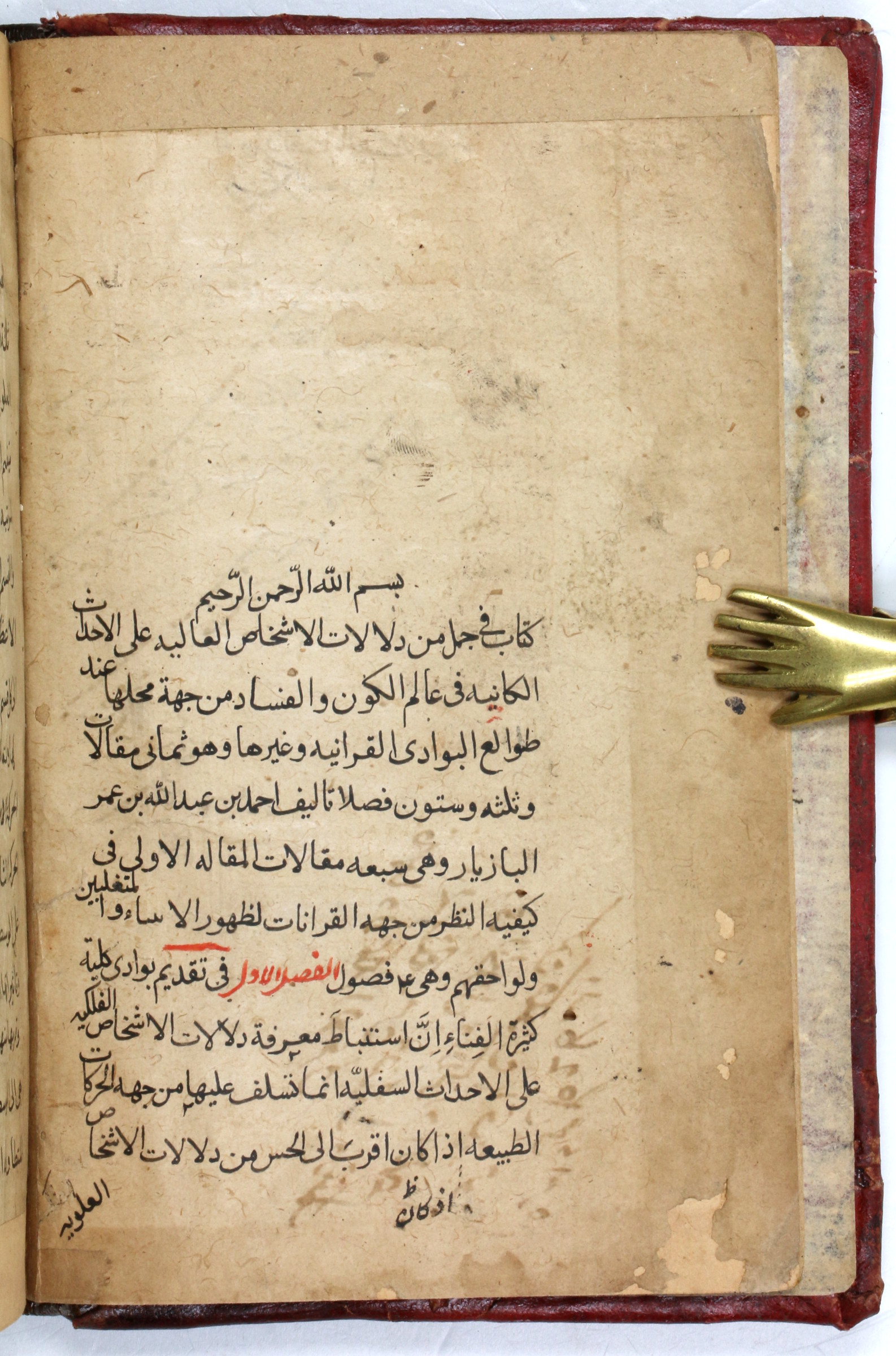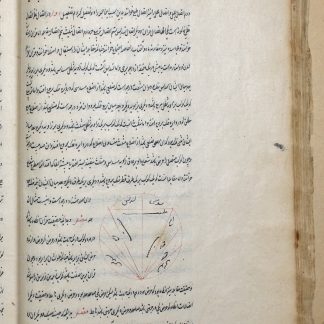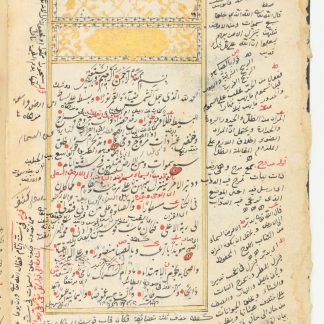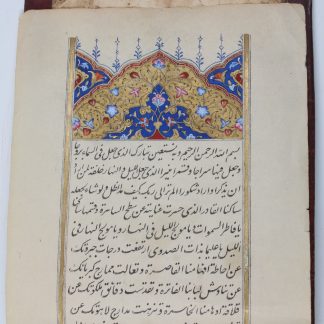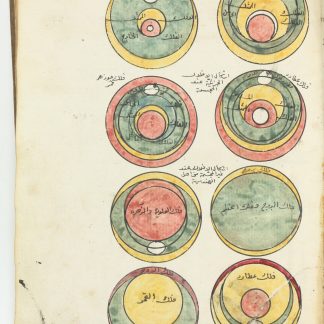Geometry in gold: illustrated astronomical manuscript
Kitab al-milal wa 'l-duwal [Religions and Dynasties].
8vo (130 x 195 mm). 170 ff. Arabic manuscript on polished paper. 16 lines of black naksh script, chapter titles in red, some words picked out or underlined in red, with marginal commentaries. 50 astronomical diagrams in black, red, and gold. Covers bound in red morocco with brown leather spine.
€ 45,000.00
A beautifully crafted manuscript of a rare and important text on historical astrology, illustrated with fifty astronomical diagrams in gold, red and black. Written in the ninth century, "Kitab al-milal wa al-duwal" ("Religions and Dynasties"), also known as "Kitab al-Qiranat" ("On Conjunctions"), explains the effects of celestial conjunctions on nations, dynasties, religions, prophets, kings, disasters, and wars. Historical astrology was popularized in the Islamic world when Abbasid caliphs used it to bolster their dynasties, and "Kitab al-milal wa al-duwal" is among the principal medieval efforts on the subject. Together with Abu Ma'shar's other works on astrology it was translated into Latin as early as the 12th century, and printed in 1489, it was "read by Roger Bacon, Pierre d'Ailly, and Pico della Mirandola, and discussed in their major works" (Yamamoto, 11). This manuscript, meticulously crafted in the first decades of the 18th century, gives proof of the centuries-long influence and readership of "Kitab al-milal wa al-duwal" well into the early modern period.
Accompanied by marginal notes, the fifty astrological diagrams in this copy depict celestial events such as conjunctions, lunar and solar eclipses, horoscopes, planetary orbits, the precession of the zodiac, the lunar phases, habitable zones of the earth, etc. While the text is quite similar to other known examples (e.g., British Library OR 7716), the numerous diagrams appear to be a unique feature of the present specimen.
The manuscript identifies the author as Muhammad (here, "Ahmed") ibn 'Abd Allah ibn 'Umar ibn al-Bazyar. Indeed, the authorship of this work has been a subject of debate almost from the beginning, being attributed either to al-Bazyar or to his teacher, Abu Ma'shar. The earliest reference to the book is in Ibn an-Nadim's "Fihrist", which mentions the work under both authors, noting that Abu Ma'shar wrote it and sent it to Ibn al-Bazyar, possible for revision or completion. Subsequently, authorship has attributed differently by the various manuscript traditions: "While the extant manuscripts of the Eastern Arabic tradition are attributed to Ibn al-Bazyar, those of the western one are assigned to Abu Ma'sar" (Yamamoto, xxi). Today, it is usually known as Abu Ma'shar's book, since the twelfth-century Latin translation ascribed it to him.
European private collection.
Some staining and worming throughout; a waterstain to the upper edge; a few edges chipped, not affecting the text. Paper repairs. Gilt edges faded. Text and diagrams are bright and clean.
GAL S I, 394. DSB I, 36, no. 8. Keiji Yamamoto & Charles Burnett (eds.), Abu Ma‘šar on Historical Astrology: The Book of Religions and Dynasties (On the Great Conjunctions) (Leiden, 2000). Keiji Yamamoto, "Abu Ma'shar Ja'far ibn Muhammad ibn 'Umar al-Balkhi", in: Thomas Hockey et al. (eds.), The Biographical Encyclopedia of Astronomers (New York, 2007).

